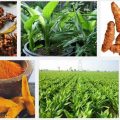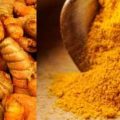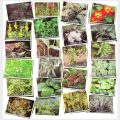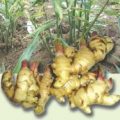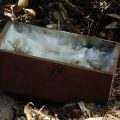The Philippines is distinguished as the seventh most biologically diverse country in the world. In fact, the country is internationally known to be a source of medicinal plants, functional foods, natural food dyes, tropical fruit flavors, and essential oils. Thus, the country is capable of producing value-added materials from local biodiversity and, eventually, trading of high quality products.
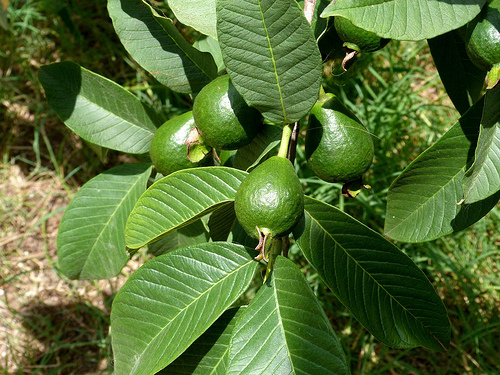
Due to its economic potential, research and development (R&D) is a very important tool, not only for producing and marketing high quality and effective products from medicinal plants but also to boost the Philippine’s alternative healthcare industry. Likewise, through R&D, the country can conserve its biodiversity and document promising medicinal plants and other sources of natural ingredients.
Indigenous Plants for Health and Wellness Program
In response to the need for R&D agenda for the industry, the Indigenous Plants for Health and Wellness Program was launched by the Department of Agriculture (DA) through the Bureau of Agricultural Research (BAR). The program is also in line with Proclamation No. 1280 issued in 2007 declaring the month of October as the “National Health and Wellness Tourism Month”.
The IPHWP looks into the potential of the Philippine biodiversity particularly the plant species and conventional food crops with health-promoting potentials, to properly utilize and conserve these plant resources. Further, the program helps improve the health and wellness of each and every Filipino through natural but effective products.
In 2013, BAR supported two IPHW projects under the bureau’s National Technology Commercialization Program (NTCP) and two others as basic and applied research. Presently, there are eight ongoing projects three of which are funded under NTCP and five are basic/applied researches.
Creating Business Opportunities from Various Medicinal Plants
Before the advent of technological advances when conventional medicine was born, our elders were already practicing traditional medicine by using available plants and other crops for the treatment of various ailments like fever, cough, colds, diarrhea, skin diseases, etc. Up to the present time, some individuals are still patronizing alternative medicine which they have proven to be efficient and effective without any harmful side effects as compared to synthetic drugs in the market.
To support conservation efforts with regard to Philippine biodiversity and to help preserve the indigenous knowledge and traditions through marketable technology, Green Rescue Organic Association Incorporated (GRO), a barangay-based rural enterprise headed by Ms. Lucia D. Dalisay and which is located in Tiaong, Quezon proposed a project to BAR titled, “Technology Utilization and Promotion of Developed Products from Indigenous Plants”. This was approved under the Indigenous Plants for Health and Wellness Program through BAR’s National Technology Commercialization Program (NTCP). Specifically, the research project aims to: 1) locate popular traditional and alternative health care practitioners (TAHC) in the Southern Tagalog Region, Philippines; 2) extract from the TAHC practitioners important information with regard to medicinal plants; 3) learn the most important medicinal plants they use by plant category; 4) learn the most common ailments treated with medicinal plants; 5) conserve the most important ones identified from the survey in community-based nurseries; 6) develop high quality natural products from the medicinal plants; 7) test the market potential of the developed natural products; and 8) establish community-based nurseries and plantations as sources of raw material for interested parties.
Project Milestones
The project team located TAHC practitioners in Southern Tagalog Region and conducted a series of surveys. After data collection, they made a count and classified the medicinal plants identified by the TAHC practitioners. The researchers then identified the most common medicinal plants used by the TAHC Practitioners by category (e.g., trees, shrubs, herbs, vegetables, spices or plantation crops) as well as the diseases reportedly cured by the medicinal plants.
In terms of the mode of administering health treatments, TAHC practitioners were found to prefer decoction, poultice and infusion. Based on the surveys, patients who used these were very satisfied (37.70 percent) because they fully recovered within 1-2 days. When asked the reasons why some plants are not used anymore, majority of the TAHC practitioners said that the plants are either not found anymore, seasonal, not common, or are hard to find. Also part of the researchers’ questionnaires delves on the reasons for other patients’ high preference for synthetic drugs over alternative healing methods and noted the comment of most of the TAHC practitioners that synthetic drugs are readily available. As for the reasons for the continued TAHC practice, majority of the practitioners said that synthetic drugs are more expensive and have more side effects.
After data gathering, the researchers recognized the efforts of TAHC practitioners in preserving the old traditions of healing with the use of medicinal plants. The research also revealed that some of the practices have scientific basis and, therefore, a select number of these plants qualify for commercialization.
Project Accomplishments
As the recipient of the technology provided by Dr. Estela Taño of Department of Agriculture-Quezon Agricultural Experiment Station (DA-QAES), the GRO was able to create new lines of natural products in 2011 like native guava soap, turmeric natural healing cream, turmeric multipurpose tea, native ginger body massage cream, native ginger tea, native guava jam, rosemary capsule, and tamarind multipurpose concentrate.
Guava soap naturally smoothens the skin which tightens the skin pores and even lightens dark spots while turmeric cream easily dries wounds, removes toxins, and relieves itchy skin due to insect bites. Native ginger cream relieves muscle and nerve pains and is also applicable for swellings, cramps and skin infections due to insect bites. Rosemary capsules alleviate body aches and headaches due to fever, cough and colds.
To effectively promote the products, GRO has direct involvement in various commercialization activities by participating in local and international trade fairs and exhibits and in establishing direct dealers. The project team also successfully established two community-based nurseries and organic plantations of native guavas, turmeric, native ginger and coconut in Tiaong, Quezon and in Mt. Banahaw. Also, a simple community-based processing house was established with complete water system specifically for manufacturing coco jam, turmeric and native ginger products.
GRO is also recognized with a grant of a License to Operate (LTO) by the Food and Drug Administration (FDA) as one of only two organic product processors established in Tiaong, Quezon for processing eight natural products.
In 2012, turmeric natural healing cream and turmeric tea were awarded as among the “Best New Products” during the 8th Agriculture and Fisheries Technology Forum and Product Exhibition.
As a barangay-based rural enterprise, the GRO also generated working opportunities in Tiaong, Quezon. As of now, there are at least seven workers hired by its processing laboratory aside from the on-call workers. In addition, one farmer couple exploring the potentials of the business was trained on field operations and processing.
Indeed, the project team has been successful in spreading the Package of Technology (PoT) for processing and producing natural and organic products. As proof, the GRO has established proper market positioning which gives it the edge over other competitors in the mainstream market. ###
———–
References:
1. Taño, Estela. “Identification of Important Medicinal Plants in Southern Tagalog Region, Philippines, Development of Natural Products and Mass Production for Commercialization”, paper presented during the 9th Agriculture and Fisheries Technology Forum and Product Exhibition and 26th BAR Anniversary, August 8-11, 2013, SM Megatrade Hall 2, SM Megamall, Mandaluyong City
2. Arroyo, Ma. Antonia, O.G. et al., Natural Ingredients Study: Mid-Term Report, Department of Agriculture-Biotechnology Planning and Implementation Unit, 2008, p. 3
By: Liza Angelica D. Barral, Bar Digest, October-December 2013 Issue (Vol. 15 No. 4)
